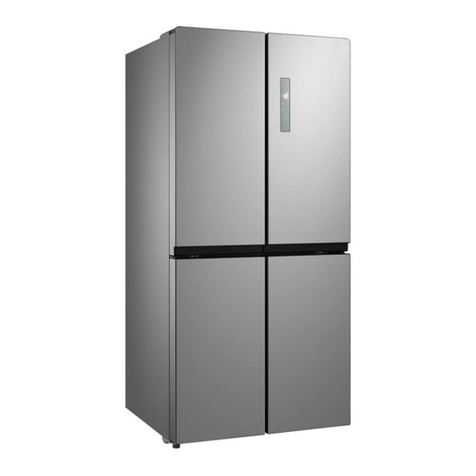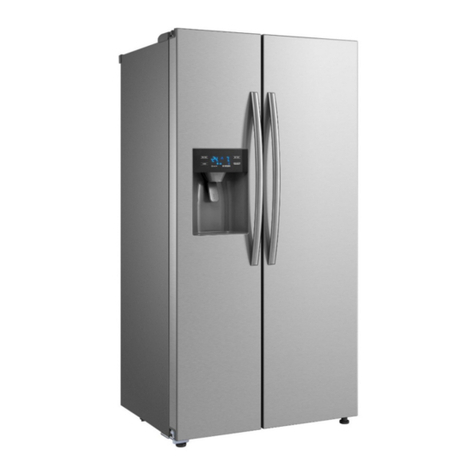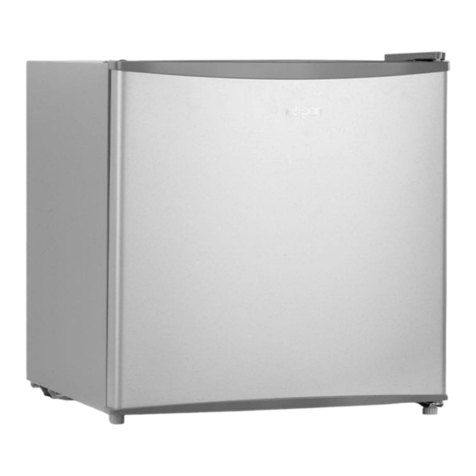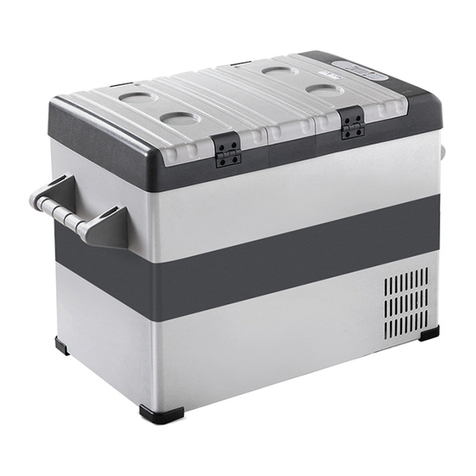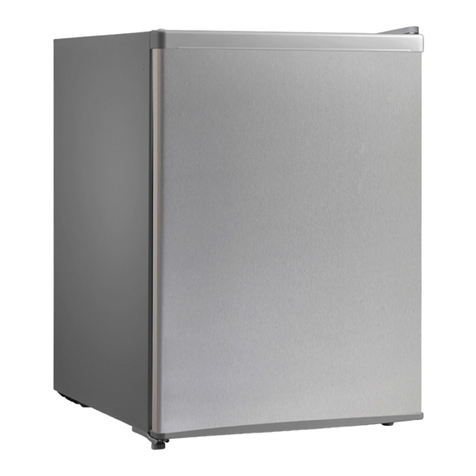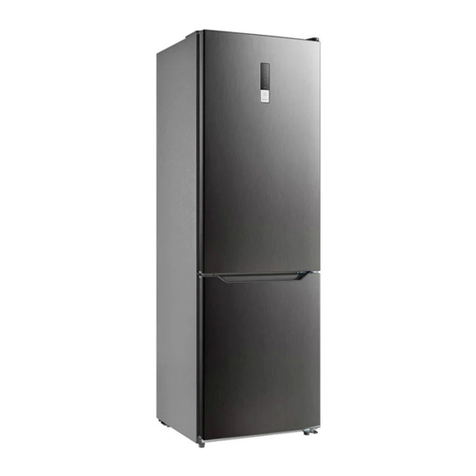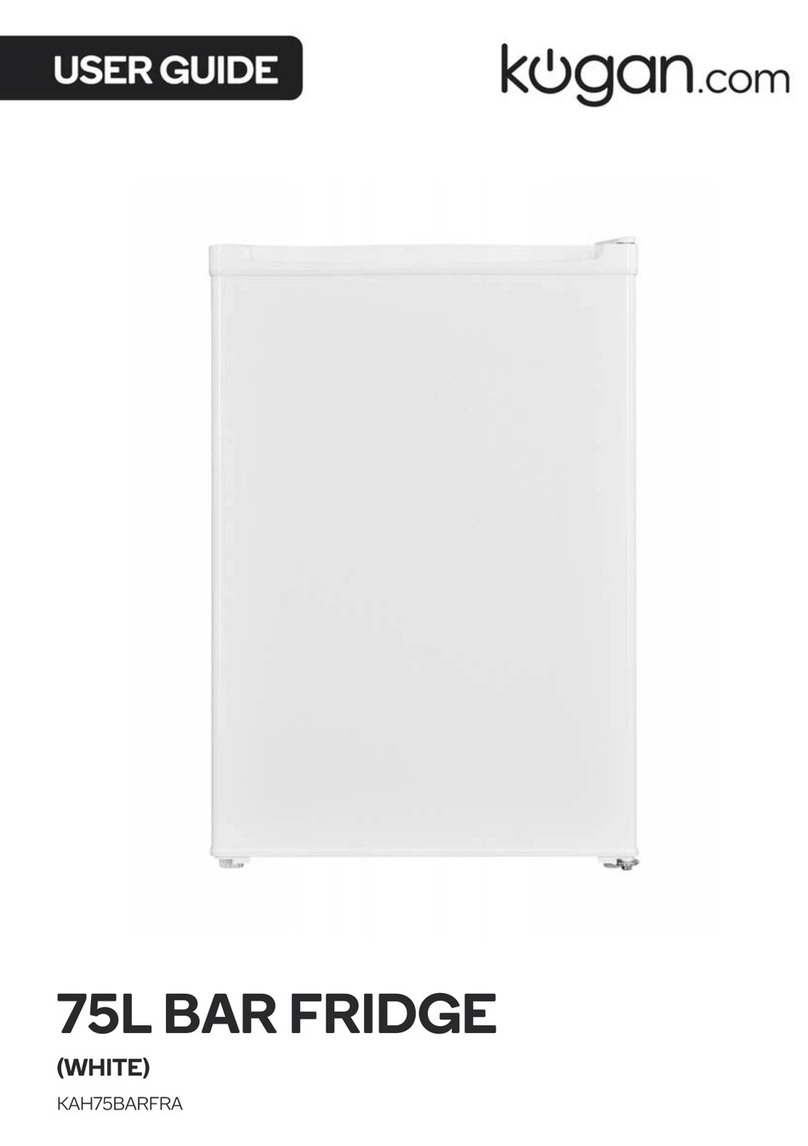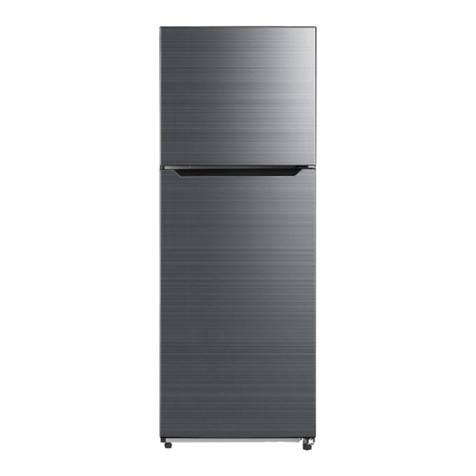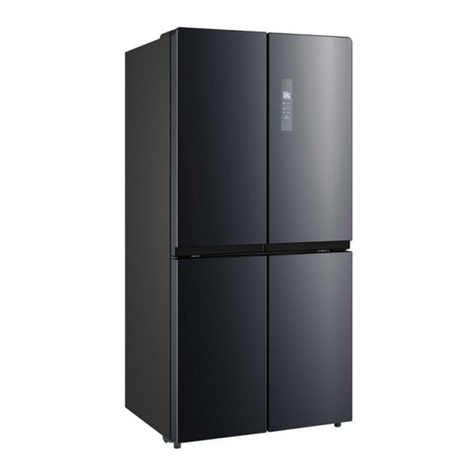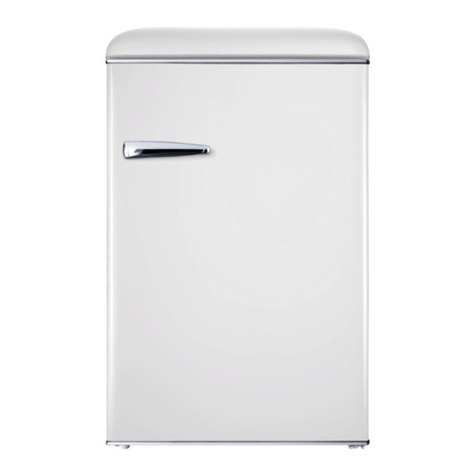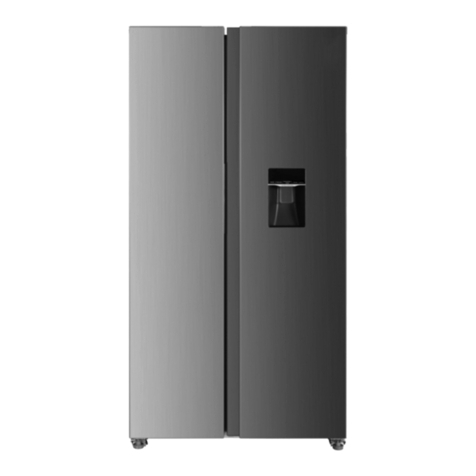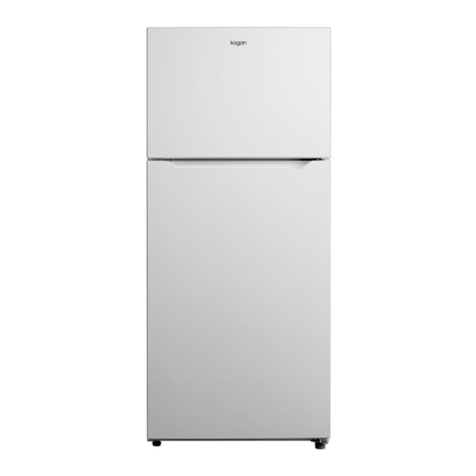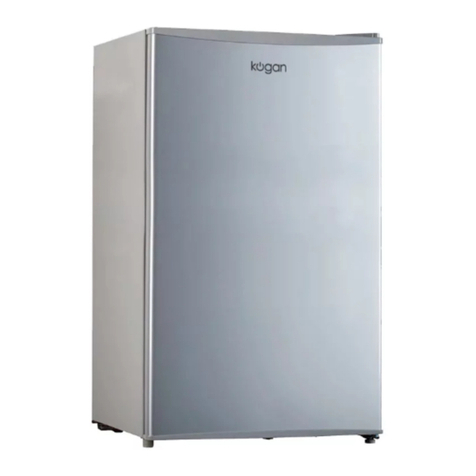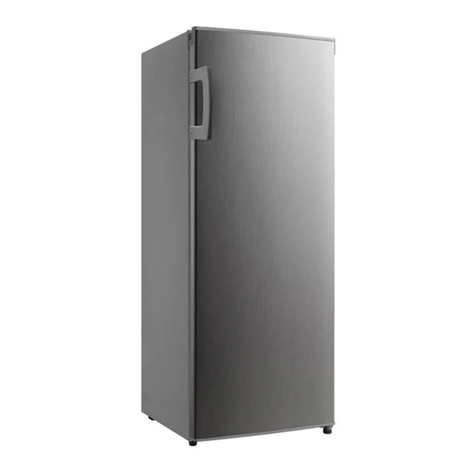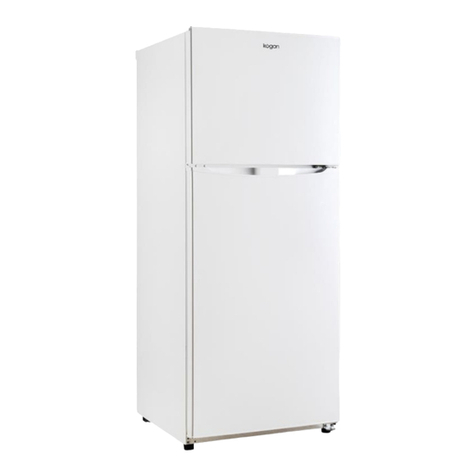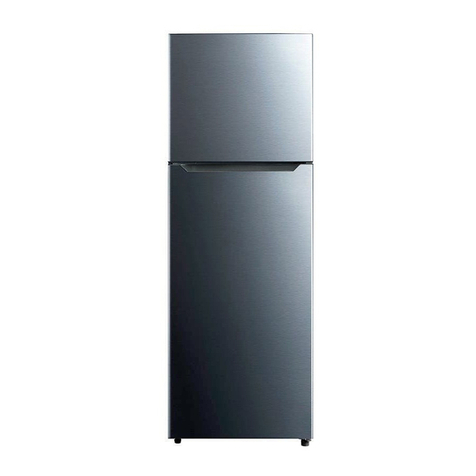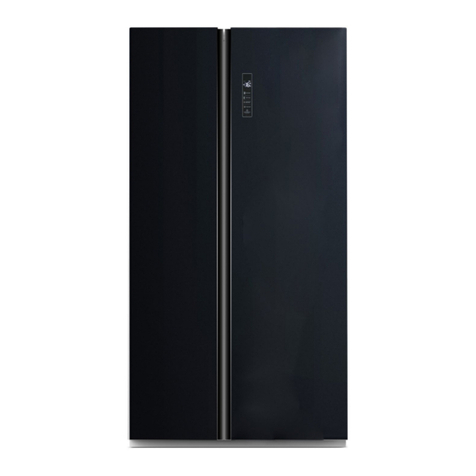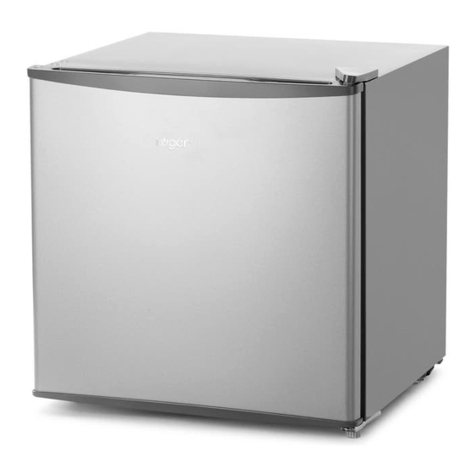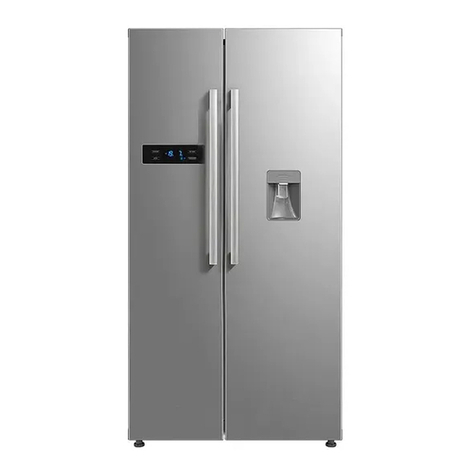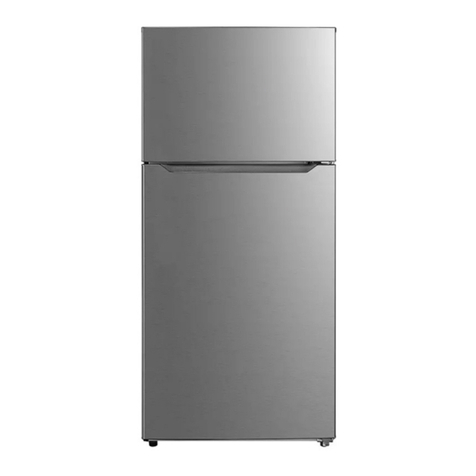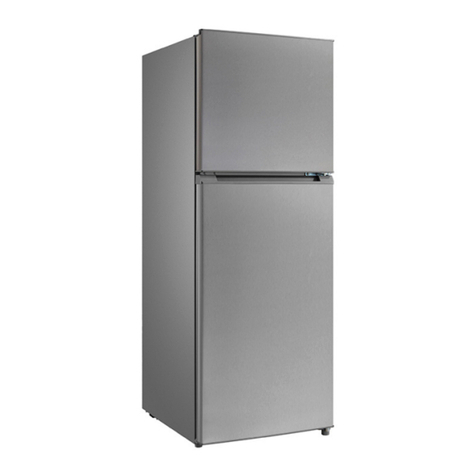
4
appliance, unless they are of the type recommended by the manufacturer.
• WARNING: When positioning the appliance, ensure the power cord is not trapped or
damaged.
• WARNING: Do not locate multiple portable socket-outlets or portable power supplies at
the rear of the appliance.
• Do not use extension cords or ungrounded, (two prong adapters.
• This appliance is designed to be standing only and should not be recessed.
Electrical safety:
• Before connecting and turning on the appliance, ensure the electrical voltage and circuit
frequency correspond to that indicated on the appliance rating label.
• This appliance should be properly earthed for your safety. The power cord of this appliance
is equipped with a three-prong plug for use in standard wall outlets to minimise the
possibility of electrical shock. Do not modify the cord and/or plug provided with the
appliance. Improper use of the earthed plug can result in the risk of electric shock.
• This appliance requires a standard 220-240V AC 50Hz electrical outlet. Do not overload
the electrical circuit.
• Do not kink or damage the power cord; do not leave it exposed or dangling. Secure it at the
back of the appliance so no one steps on or places anything on the cord or against it. Keep
the cord out of reach of children. When moving the appliance, make sure not to damage
the power cord.
• Do not use an inverter, adaptor or extension cord with this appliance. If the cord is too
short, have a qualified electrician install an outlet near the appliance. Use of an extension
cord and an inverter can negatively aect the performance of the unit.
• To protect against the risk of electric shock, do not immerse the unit, cord or plug in water
or spray it with any other liquid. Do not connect or disconnect the electric plug when your
hands are wet. Turn the power switch o before removing the plug from the socket.
• WARNING: To reduce the risk of fire, electric shock or personal injury, always unplug the
appliance from the socket when not in use, when moving and before cleaning or servicing.
Never unplug the unit by pulling the power cord. Always grip the plug firmly and pull
straight out from the power point.
Children:
• This appliance is not intended for use by persons (including children) with reduced physical,
sensory or mental capabilities, or lack of experience and knowledge, unless they have been
given supervision or instruction concerning use of the appliance by a person responsible for
their safety.
• Children should be supervised to ensure that they do not play with the appliance.
Unpacking:
• During transportation, protective packaging was used to protect the appliance against any
damage. Aer unpacking, please dispose of all elements of packaging in a way that will
not cause damage to the environment.
SAFETY AND WARNINGS (cont’d)
